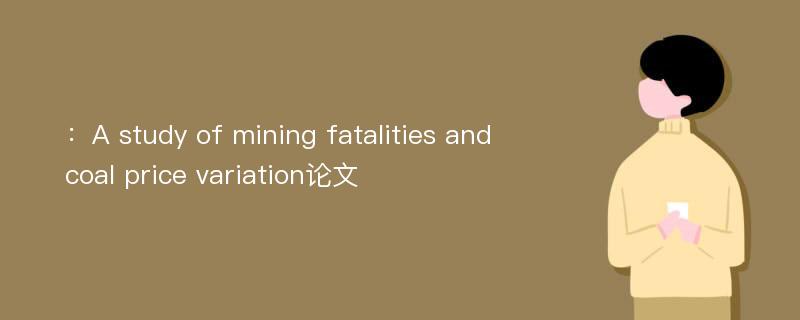
本文主要研究内容
作者(2019)在《A study of mining fatalities and coal price variation》一文中研究指出:It has long been postulated that a relationship exists between commodity price cycles and fatalities in the mining industry. Previous studies have found only weak correlations in this area. This study analyses the fatalities recorded in coal mines over the period 1985–2016 in the State of Queensland as a function of thermal coal price variation. The study finds that the relationship between fatalities and coal prices is not linear. One to two fatalities occur in most years independent of the thermal coal price. When the price of coal falls below AUD 55/tonne(non-inflation adjusted), the likelihood of an incident involving multiple fatalities increases. The probability can be estimated at 2 in 18 events(equivalent to 11%). This paper postulates that in difficult economic times, mining companies react by downsizing direct employees. If not carefully managed, this can result in loss of knowledge around safety systems, and reduced effectiveness of safety supervision. Because of labour cost advantages, some jobs previously undertaken by direct employees will be replaced by contractors. Increased contractor numbers contribute to increased risk of fatalities occurring, as contractors are over-represented in accident categories involving vehicle accidents, tire handling and crushing incidents. Mine inspectorates, mining, and mining contractor companies need to be especially vigilant to enforce health and safety management systems during periods of low coal prices.
Abstract
It has long been postulated that a relationship exists between commodity price cycles and fatalities in the mining industry. Previous studies have found only weak correlations in this area. This study analyses the fatalities recorded in coal mines over the period 1985–2016 in the State of Queensland as a function of thermal coal price variation. The study finds that the relationship between fatalities and coal prices is not linear. One to two fatalities occur in most years independent of the thermal coal price. When the price of coal falls below AUD 55/tonne(non-inflation adjusted), the likelihood of an incident involving multiple fatalities increases. The probability can be estimated at 2 in 18 events(equivalent to 11%). This paper postulates that in difficult economic times, mining companies react by downsizing direct employees. If not carefully managed, this can result in loss of knowledge around safety systems, and reduced effectiveness of safety supervision. Because of labour cost advantages, some jobs previously undertaken by direct employees will be replaced by contractors. Increased contractor numbers contribute to increased risk of fatalities occurring, as contractors are over-represented in accident categories involving vehicle accidents, tire handling and crushing incidents. Mine inspectorates, mining, and mining contractor companies need to be especially vigilant to enforce health and safety management systems during periods of low coal prices.
论文参考文献
论文详细介绍
论文作者分别是来自International Journal of Mining Science and Technology的,发表于刊物International Journal of Mining Science and Technology2019年04期论文,是一篇关于,International Journal of Mining Science and Technology2019年04期论文的文章。本文可供学术参考使用,各位学者可以免费参考阅读下载,文章观点不代表本站观点,资料来自International Journal of Mining Science and Technology2019年04期论文网站,若本站收录的文献无意侵犯了您的著作版权,请联系我们删除。
标签:International Journal of Mining Science and Technology2019年04期论文;
